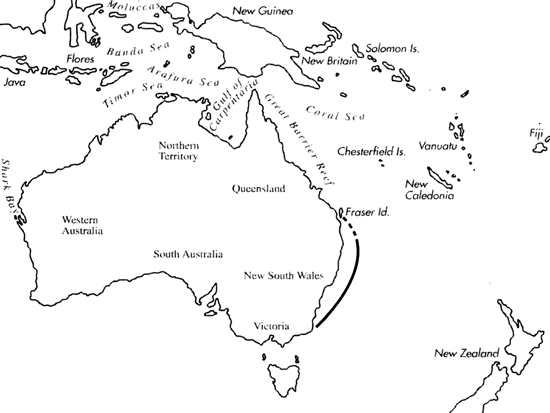
Skip Navigation Links
View access keys for this site.

Range: New South Wales, Australia.
Description: Small to medium sized, light to moderately solid. Last whorl ventricosely conical to broadly and ventricosely conical, sometimes slightly pyriform; outline convex, straight or sometimes slightly concave near base; left side sigmoid. Shoulder angulate to rounded. Spire of low to moderate height; outline almost straight, with projecting larval shell. Larval shell of 1.5-2 whorls, maximum diameter 1.1-1.2 mm. Teleoconch sutural ramps flat to slightly concave; 4 increasing to 6-10 rather fine spiral grooves on late ramps. Last whorl with variably spaced weak spiral ribs at base.
| Shell Morphometry | ||
|---|---|---|
| L | 20-37 mm | |
| RW | 0.05-0.20 g/mm | |
| RD | 0.66-0.73 | |
| PMD | 0.77-0.85 | |
| RSH | 0.08-0.14 | |
Ground colour grey to light blue or light violet. Last whorl with olive to dark brown flecks, blotches, flames and axial zigzag lines, usually arranged above and below a slightly paler spiral band at centre. Spiral rows of usually alternating brown and white dots extending from base to shoulder, variable in number and prominence. Base and basal part of columella white to light grey. Larval whorls grey to pale blue. Postnuclear sutural ramps with brown radial markings. Aperture dark violet-brown behind a white margin, with a paler central band.
Periostracum yellowish to greenish grey, rather thin, translucent, with closely spaced spiral rows of tufts on last whorl including shoulder.
Dorsum of foot brown to violet, sole greyish brown. Rostrum and siphon of similar but slightly paler colour. Edge of mantle yellowish brown, with short darker streaks.
Radular teeth with an adapical barb opposite a weak blade; serration ending in a cusp above the central waist; basal spur present (Bergh, 1895; Rol├Īn, 1993).
Habitat and Habits: In shallow water; on flats, inhabiting areas sheltered from constant wave pounding. Egg capsules of 10-16 x 6-6.5 mm deposited in clumps under rocks and in crevices, attached to hard substrate by confluent basal plates; about 20-30 capsules per female and spawn. Clumps often made by several females, then comprising more than 100 capsules. Observed number of eggs per capsule is 10, and observed mean egg diameter 1,000 ┬Ąm predicting a completely benthic development (Huish, 1978; Loch, pers. comm., 1987).
Discussion: C. papilliferus resembles the sympatric C. aplustre; for comparison, see the Discussion of the latter species. C. ardisiaceus may also be similar but differs in its generally larger size (L 25-55 mm), higher spire (RSH 0.10-0.20) and more ventricose last whorl (PMD 0.70-0.83). Its last whorl pattern often forms 2-3 spiral bands, its base and columella are brown.

C. papilliferus range map
This section contains verbatim reproductions of the accounts of 316 species of Conus from the Indo-Pacific region, from Manual of the Living Conidae, by R÷ckel, Korn and Kohn (1995). They are reproduced with the kind permission of the present publisher, Conchbooks.
All plates and figures referred to in the text are also in R÷ckel, Korn & Kohn, 1995. Manual of the Living Conidae Vol. 1: Indo-Pacific Region.
The range maps have been modified so that each species account has it own map, rather than one map that showed the ranges of several species in the original work. This was necessary because each species account is on a separate page on the website and not confined to the order of accounts in the book.
Return to framed version (returns to search page)